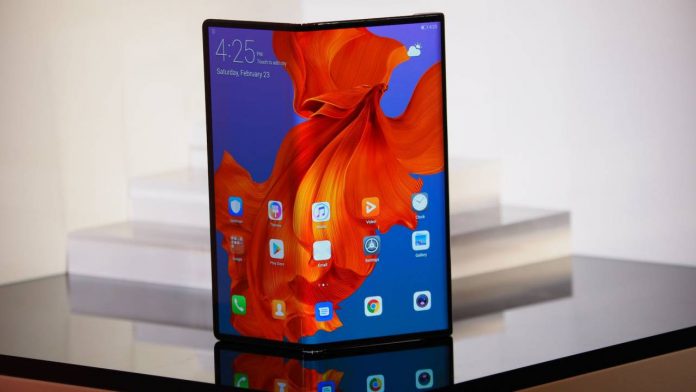Just like 5G phones, foldable phones are undeniably on the rise. Back in February, the trend stole the show at MWC 2019 as many phone makers announced their plans for foldable phones. With one flexible device already available to buy and a couple of others expected this year, phones with foldable displays aren’t far-off concepts any longer. Everyone from big-name Samsung and lesser-known brands including Huawei, to unknown startups like Royole, are ready to inject a much-needed jolt into the industry.
In addition, Google seems to be committed to providing Android support for foldable designs, so we can expect even more phone companies to get involved with the trend. (Given some of its own patent filings that recently came to light, it may even release a foldable phone of its own.)
Samsung Galaxy Fold: Preorder starts April 15, available April 26
As the biggest tech company to throw its hat into the ring, many were eager to learn about the Galaxy Fold at Samsung Unpacked and it didn’t disappoint. When closed, the Fold has a secondary 4.6-inch display that serves as its “cover,” with the usual features you’d expect on a phone. When you’re ready for something bigger, the Fold opens up just like a book to a 7.3-inch tablet.
To get the phone, you first need to place a reservation for the Galaxy Fold when you register online to receive more information from Samsung. (Unfortunately, the UK site does not yet have a Fold page. If you’re in Australia, click “pre-register now” on this page.) You then need to pre-order the device, which starts Monday, April 15. The Fold will be available in the US on April 26 and costs a pretty penny at $1,980 (about £1,500 or AU$2,800).
Huawei Mate X: Available ‘mid-2019’
Jumping on the trends of foldable phones and 5G, Huawei’s new phone has both. The Mate X has a 6.6-inch display when folded closed and an 8-inch OLED screen when you flip it open. And it features 5G connectivity that’s said to be four times faster than 4G, a 4,500-mAh battery and three rear cameras.
Similar to the Fold, it’ll also be very pricey at 2,299 euros, or about $2,600, £2,000 or AU$3,660. However, at its MWC keynote event when Huawei first announced the phone, the company hinted that cheaper models may be coming down the pipeline.
It’s unlikely that the Mate X will be available in the US when it launches mid-2019 though. Calling it a security threat to the Department of Defense, the US government banned the sale of Huawei phones on US military bases. Retail giant Best Buy stopped selling them in March 2018 and Huawei’s CFO was arrested in Canada at the request of the US in an act her father said was politically motivated.
Nubia Alpha: Confirmed
Nubia, an associate company of Chinese phone-maker ZTE, is taking the concept of a foldable phone one step further with its Nubia Alpha. Introduced at MWC, the Alpha is unique in that it’s a phone that wraps around a user’s wrist, similar to a smartwatch. It features a flexible 4.01-inch display, gesture controls and a water-resistant design.
This isn’t the first time we’ve seen a phone that looks like the Alpha. In 2016, Lenovohad a concept device called CPlus, which had a 4.26-inch display that you bent over your wrist. But the Alpha isn’t a concept — though Nubia didn’t release any pricing or availability dates, it will make the Alpha commercially available to users.
TCL: Confirmed for 2020
Mostly known for its affordable televisions, Chinese tech company TCL is working on a number of foldable devices, which include two tablets, two phones and a cuff-like phone you wear around your wrist. Despite not being a household name in the US, you may know TCL better through other brands it owns, namely BlackBerry, Alcatel and Palm.
The upcoming devices all have flexble AMOLED displays that can bend because of what TCL calls a DragonHinge. Patented by the company, the hinge enables the screens to fold both inward and outward. TCL estimates that its first foldable phone will be available in 2020 and that it could cost less than $1,000 — making it significantly cheaper than the Galaxy Fold.
